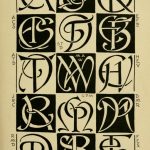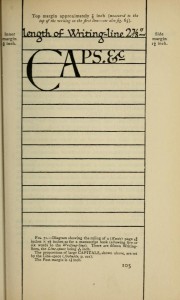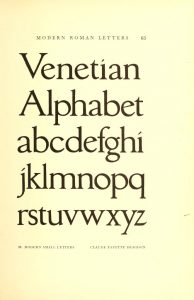 Typography, the aesthetics of language, gets a lot of attention these days. What was once the purview of specialized professionals is now as common as the PC. The digital revolution’s democratizing impact on publishing has also been a boon for the typographer–or at least the typographer’s eye–in the digital sphere. Even if you aren’t labeling your digital choices as “typography,” chances are you are posing questions that typographers ask. How can font help convey meaning? Why is one font preferable to another? Or even, should this be bold and in red?
Typography, the aesthetics of language, gets a lot of attention these days. What was once the purview of specialized professionals is now as common as the PC. The digital revolution’s democratizing impact on publishing has also been a boon for the typographer–or at least the typographer’s eye–in the digital sphere. Even if you aren’t labeling your digital choices as “typography,” chances are you are posing questions that typographers ask. How can font help convey meaning? Why is one font preferable to another? Or even, should this be bold and in red? 
In my post for this month, Lettering in Ornament; an Enquiry into the Decorative Use of Lettering: Past, Present, and Possible not only gets my vote for best title ever, but it also provides stark context for the evolution of typography. Published in 1902, this title offers insight into the theory of getting the most bang out of your movable type buck. While some of the technique might not translate into a new century, much of the philosophy is still relevant. For example, on legibility and meaning:
…the first and usual purpose of lettering is that it should be read with ease, but there are occasions when easy reading is of secondary consequence and the more important consideration is decorative propriety.
In other words, legibility can be sacrificed to increase visual meaning. All caps script fonts aren’t good for traffic signs, but for the cover of your death metal band’s latest album? By all means…
The specialized vocabulary associated with typography provides more insight into the kinds of questions typographers ask themselves. Did you know there is a term for the lower portion of the lowercase “g”? It’s called a loop. More examples of this vocabulary are available here. Kerning is the term typographers use to describe the method of achieving pleasantly readable text by controlling the space between letters. Try this informative and fun interactive quiz designed to increase your kerning chops! Kern Type.
The Cultural Heritage Library (CHL) features a modest collection of early lettering and typography monographs. Other titles of note include, Writing and Illuminating, and Lettering (1906) and Letters & lettering; a treatise with 200 examples (1902). Both are pictured in this post.

2 Comments
Kerning is the coolest!
[…] Next » […]